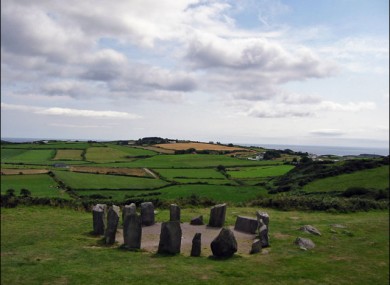… Archaeology. It was good for archaeology.

Bronze Age Drombeg Stone Circle in Co Cork
The high level of digging during the Boom to facilitate building projects has made Ireland a hot spot for archaeological excavations.
Thanks to this, researchers from a number of universities across the UK and Ireland, including University College Cork and Queen’s University in Belfast, have discovered that a huge population drop that occurred in the Bronze Age was NOT related to climate change.
Population drop
The new research shows that a population drop that occurred after 900BC and increased rapidly from 800BC was not – as had previously been thought – tied to colder, wetter conditions, which are now believed to have occurred two or three generations later.
In conducting their research, the team involved referenced climate records from peat bogs in Ireland, compared these with archaeological records and then cross referenced them to climate change information available for Europe for between 1,200 and 500BC.
Instead, it is now thought that the real reason for the population drop was social and economic stress.
Conditions of the day would have seen those producing bronze required to travel large distances to trade their wares for copper and tin – something that led to the ascension of a warrior class, and made survival difficult.
The later drop in temperature meant that population figures did not recover for a long period of time.
Significance today
The results are particularly significant for climate change researchers in relation to their historical impact on climate change.
Speaking to TheJournal.ie, Dr. Katharina Becker from University College Cork, said:
Also speaking about this, Professor Ian Armit from the University of Bradford, said:I think it just demonstrates that we cannot make simplistic equations when we are not sure about the timing of events. It is through fine grained chronological analysis can we look at how human developments relate to climatic events.
“The impact of climate change on humans is a huge concern today as we monitor rising temperatures globally.
This research included environmental scientists and archaeologists from University College Cork, the University of Bradford, the University of Leeds and Queen’s University Belfast.Often, in examining the past, we are inclined to link evidence of climate change with evidence of population change. Actually, if you have high quality data and apply modern analytical techniques, you get a much clearer picture and start to see the real complexity of human/environment relationships in the past.
fonte: @edisonmariotti #edisonmariotti http://www.thejournal.ie/celtic-tiger-value-good-idea-1784231-Nov2014/


Nenhum comentário:
Postar um comentário